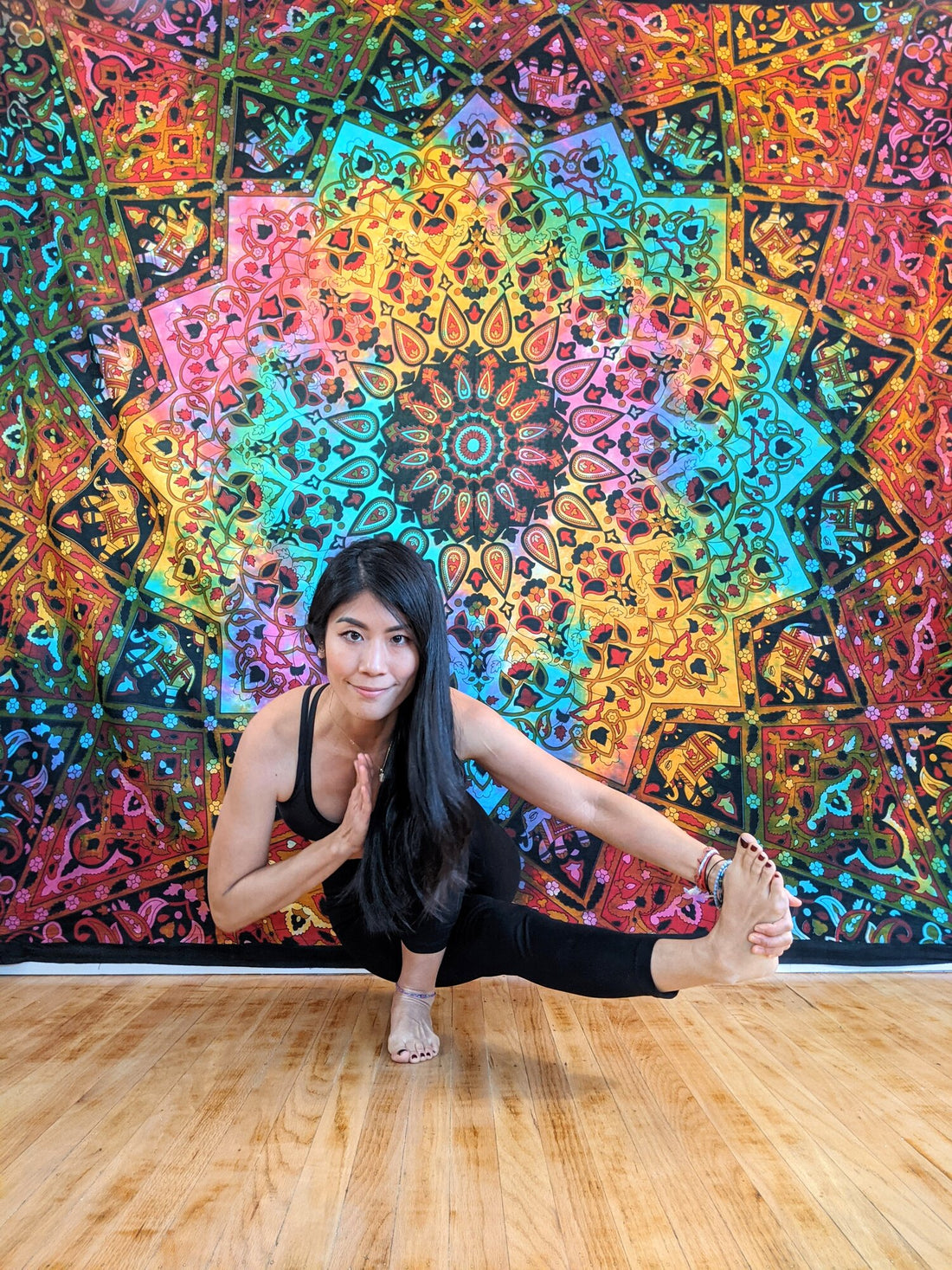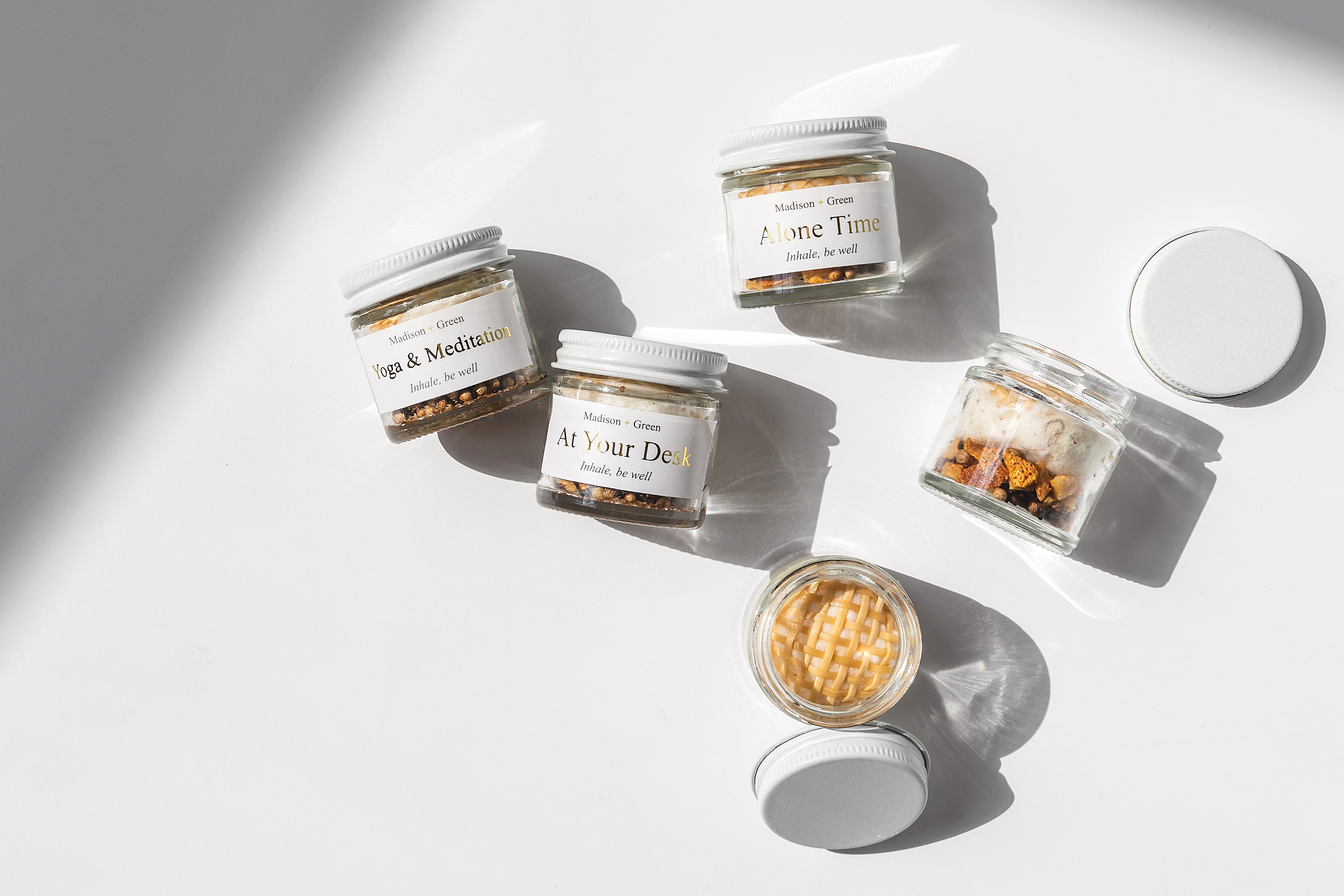I Interviewed a Yoga Instructor and Learned About the Healing Benefits of Yin Yoga.
Kazuko Sakura was always on the move growing up. She was born in Panama and raised in Japan, though her parents were missionaries, so she was always moving around. After a series of unfortunate events in her life, she discovered the healing power that yoga truly holds. Because she wanted others to understand the healing benefits of yoga, she went on to get her yoga teacher certification, and she now teaches others.
I sat down with her today to discuss a particular type of yoga known as Yin Yoga. In the interview, we take a deep dive into yin yoga, and we practice eight different poses (including yin yoga for kids). You can check out the full interview here.
Jasmine: “Can you first tell us what Yin Yoga is?”
Kazuko: “Yin yoga is a type of yoga where you stay in the same position for a long time. No moving muscles, no standing poses.”
According to the Chinese meridians, there is a major meridian pathway that goes throughout our body, which is the pathway for prana, or life force energy. Yin yoga works to activate the prana moving throughout these pathways while also stimulating the connective tissue that holds all the organs, bones, and joints in place.
While staying in the same position for an extended amount of time, it’s essential not to push your body to the point of extreme discomfort. Yin yoga is all about striking a balance. “Finding the edge,” as Kazuko calls it. It’s okay to push yourself and allow your body to hold these poses and feel some sensations that might be uncomfortable. However, stretching to the point of sharp pains is your body’s way of telling you to ease up.
Jasmine: “What are the other elements [of yin yoga] other than just stretching?”
According to Kazuko, there’s a significant mental element that comes with yin yoga. Finding the edge when holding a stretch and reaching that point of discomfort while breathing into it reinstates this power in us. It’s kind of like facing our fears, it might feel way more comfortable just to run away and hide from whatever is causing us to fear, but until we face it and accept it, it will always return.
It’s finding acceptance within the discomfort; it’s facing the fear and saying, “okay. I see you, fear. And you know what? I think I’m going to breathe into your presence and keep going.”
“Think about hiking up a really steep mountain... and there’s a rope that you hold onto, that’s the rope that supports your life. I take it as the breath is that rope.” - Kazuko
Jasmine: “How do you breathe during yin yoga?”
Kazuko: “I really don’t think there’s any right or wrong way, but for me,the ujjayii breath works well. The Ujjayi breath is when you kind of contract the back of the throat… breath in through the nose, and the breath out should sound a lot bigger, some people call it an ocean wave sound or DarthVadarr breath.”
So, when you are holding these poses for a long time, and it is starting to feel a little uncomfortable, think of the breath as your saving grace. This rope that’s helping you up the very steep mountain, allowing you to find space in the poses.
When you’re holding these stretches for an extended period of time, your muscle might start freaking out, sending signals to the brain like ‘hey, this isn’t what I normally do; I’m getting confused,” at which point your muscle might start moving around. This moment is where it is so essential to breathe into it. Kazuko compares this to an anxiety attack; your mind and body start freaking out, and it becomes hard to function. That’s when breathing can come in as a powerful tool to lessen the panic attack.
Kazuko recommends yin yoga to people who feel anxious or stressed out. Remember to always listen to your body and do only what your body is capable of doing.
Here are a few poses you can try right now:
Pose #1: Lizard Pose or Dragon Pose
- Come down onto the mat on your hands and knees.
- Bring one foot forward outside of the hands.
- Walk your back knee back.
- Your hips should drop between your knees.
- Bring the heart forward, keeping your back nice and straight.
- If it’s comfortable for you, bring your elbows down to the ground (or on a pillow.)
- If you want, you can push your front knee out so that the sole of your front foot comes up.
- Hold for 30 seconds to a minute on each side, and move slowly.
Pose #2: Pigeon Pose or Sleeping Swan
- From lizard pose, move your front foot forward to the opposite hand, and drop the knee slowly.
- If there’s a lot of space between your hip bone and the floor, take a block or a pillow and place it underneath in order to keep the hip bones straight ahead.
- Walk your hands forward and drop the forehead or cheek slowly onto the ground.
- Hold for 30 seconds to a minute on each side.
- This is an excellent pose for releasing stored emotional energy, which we keep in our hips.
Pose #3: Butterfly Pose.
- Sit down and bring the soles of your feet together.
- Bring your hands to your feet and hold them with a straight spine.
- Breathe into it, going deeper with each breath.
- Take as much time as you need here; this is a straightforward and easy pose to bring you back to the center.
Page created using Blog & Page Builder by Reputon


